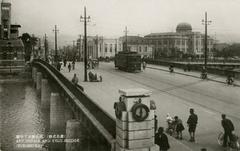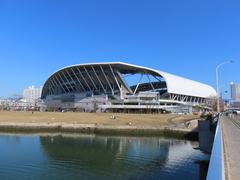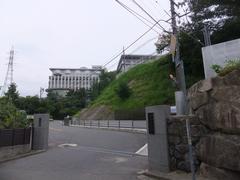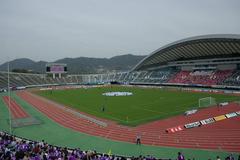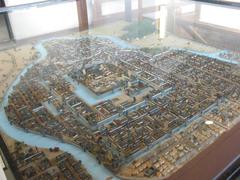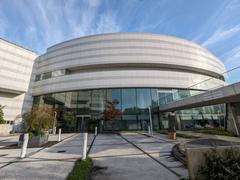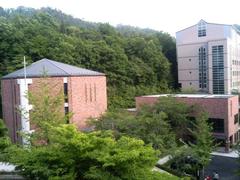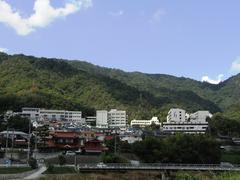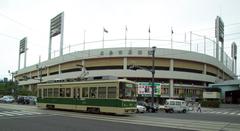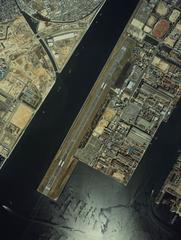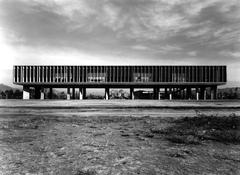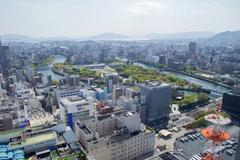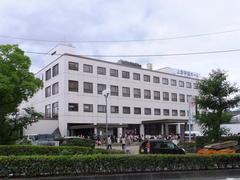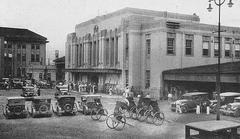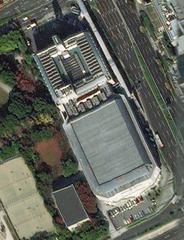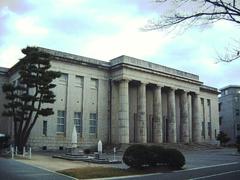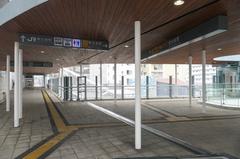
Hiroshima City Health Promotion Center Health Sciences Museum
Hiroshima City Health Promotion Center Health Sciences Museum: Visiting Hours, Tickets, Accessibility, and Visitor Guide
Date: 04/07/2025
Introduction
The Hiroshima City Health Promotion Center Health Sciences Museum is a dynamic hub that fuses interactive health education with Hiroshima’s ongoing narrative of resilience and renewal. Established as part of the city’s post-war efforts to advance public health and community well-being, the museum stands as both a testament to Hiroshima’s recovery and an innovative center for health literacy, disease prevention, and lifelong learning. Centrally located, it welcomes families, students, health professionals, and international visitors to explore the complexities of human health through engaging exhibits, workshops, and digital resources.
This comprehensive guide details everything you need to know about visiting the museum, including opening hours, ticketing, accessibility features, transportation, and nearby attractions. For the latest updates, visit the official Hiroshima City Health Promotion Center Health Sciences Museum page and the Hiroshima Prefecture website.
Museum Background and Significance
Founded as part of Hiroshima’s post-war reconstruction, the Health Sciences Museum reflects the city’s enduring commitment to peace, community wellness, and public education. Beyond Hiroshima’s global recognition for its Peace Memorial Park, this museum highlights a forward-thinking approach, focusing on health sciences and empowering individuals with knowledge (Wanderlog). The museum is housed within the Hiroshima City Health Promotion Center, which also offers health consultations, screenings, and community initiatives, supporting the city’s vision for a healthier society (Hiroshima Prefecture).
Mission and Core Objectives
The museum’s mission is to advance public understanding of health, disease prevention, and well-being for all ages. Its key objectives include:
- Health Literacy: Providing accessible, evidence-based information on nutrition, exercise, mental health, and disease prevention.
- Preventive Care: Emphasizing the significance of screenings, vaccinations, and healthy lifestyle choices through interactive experiences.
- Community Engagement: Offering workshops, seminars, and outreach to foster collective action for better health.
- Lifelong Learning: Creating educational opportunities for children, adults, and professionals.
These efforts align with Hiroshima’s broader goals of peace, resilience, and quality of life (Hiroshima Prefecture).
Exhibit Themes and Educational Features
The museum’s thoughtfully designed, interactive exhibits cover a wide spectrum of health topics:
Human Body and Health
Hands-on models and diagrams explore anatomy and physiological systems, such as cardiovascular, respiratory, digestive, and nervous systems.
Disease Prevention and Control
Displays illustrate the spread of infectious diseases, the importance of vaccination, hygiene, and preventive measures.
Nutrition and Diet
Digital kiosks and visual guides help visitors understand balanced diets, portion sizes, and the benefits of traditional Japanese cuisine.
Exercise and Physical Activity
Interactive stations promote daily activity, featuring fitness assessments and exercise demonstrations suitable for all ages.
Mental Health and Well-Being
Exhibits and workshops address stress management, emotional wellness, and the connection between mental and physical health.
Environmental Health
Explore how air and water quality, pollution, and sustainable practices impact human health.
Permanent and Special Exhibitions
Permanent Exhibitions
- Life and Body Zone: Interactive anatomical models and simulations demonstrate how lifestyle choices affect bodily systems.
- Disease Prevention and Control: Focuses on public health, hygiene, and vaccination, with a nod to Hiroshima’s unique public health history.
- Nutrition and Healthy Eating: Features balanced diet education and personalized nutritional advice.
- Mental Health and Stress Management: Offers tools for managing stress, sleep, and emotional health.
- Environmental Health: Highlights the impact of environmental factors, including pollution and Hiroshima’s recovery after the atomic bombing.
Special Exhibitions
Rotating exhibitions explore topics like pandemic preparedness, cancer treatment advances, and healthcare technology. Collaborations with universities and international organizations ensure that content is current and relevant. Upcoming exhibitions can be found on the museum’s official website and Japan Travel Events.
Educational Programs and Workshops
- School and Group Programs: Age-appropriate tours and activities aligned with curriculum standards.
- Public Health Seminars: Seminars on lifestyle diseases, disaster preparedness, and mental health, led by experts.
- Family and Community Workshops: Hands-on cooking, fitness, and first aid sessions encourage community participation.
- Professional Development: Specialized training for healthcare professionals, in partnership with local institutions (Hiroshima University Graduate School of Humanities and Social Sciences).
Interactive and Digital Learning Resources
- Simulation Labs: Hands-on experiences in medical procedures and emergency response for students and trainees.
- Digital Exhibits and Virtual Tours: Remote access to exhibits and educational modules.
- Multilingual Support: Materials and audio guides available in English, Chinese, and Korean.
Accessibility and Inclusivity
The museum is designed to be fully inclusive and accessible:
- Physical Accessibility: Ramps, elevators, accessible restrooms, step-free entrances, wide pathways, tactile paving, and accessible public transport options (city.hiroshima.lg.jp).
- Visual and Sensory Accessibility: Braille signage, large-print guides, tactile maps, interactive tactile exhibits, audio guides in multiple languages, and high-contrast signage (museum-consultant.com).
- Hearing Accessibility: Written descriptions, captions, induction loops, assistive listening devices, and sign language interpretation (museum-consultant.com).
- Neurodiversity and Cognitive Accessibility: Downloadable guides, quiet rooms, multi-sensory exhibits, relaxed admission times, and sensory kits (sensoryfriendly.net).
- Staff Training: Ongoing education in disability awareness and communication (sensoryfriendly.net).
- Multilingual Services: Signage, brochures, and audio guides in multiple languages; English-speaking staff and comprehensive online resources (city.hiroshima.lg.jp).
Visiting Hours, Tickets, and Directions
- Opening Hours: Tuesday–Sunday, 9:00 AM–5:00 PM (last admission 4:30 PM). Closed Mondays and national holidays (WhichMuseum).
- Admission: Free for permanent exhibitions; special exhibitions may require tickets (usually 300–500 yen for adults, with discounts for children, seniors, and students).
- Location: Centrally located and accessible via Hiroshima Electric Railway (Hiroden) streetcars; nearest stop is Kencho-mae Station.
- Transportation: Convenient access by tram, bus, or car. Accessible parking and drop-off zones available (japan-guide.com).
Nearby Attractions
Combine your visit with Hiroshima’s major cultural and historical sites:
- Hiroshima Peace Memorial Park
- Hiroshima Castle
- Local shopping and dining districts
Check Japan Travel Events for seasonal festivals and special programs.
Facilities and Amenities
- Wheelchair and stroller rentals
- Loaner sensory kits
- Accessible restrooms and baby-changing stations
- Storage lockers
- Service animal accommodations
- Café with accessible seating and multilingual menus
Frequently Asked Questions (FAQ)
Q: What are the museum’s opening hours?
A: Tuesday–Sunday, 9:00 AM–5:00 PM; closed Mondays and national holidays.
Q: Is admission free?
A: Yes, permanent exhibitions are free; some special exhibitions may require a ticket.
Q: Is the museum accessible for wheelchair users?
A: Yes, it is fully accessible.
Q: Are audio guides available?
A: Yes, in English, Chinese, and Korean.
Q: Can I bring a service animal?
A: Yes, service animals are welcome.
Q: Is parking available?
A: Yes, accessible parking is provided.
Q: Are guided tours available?
A: Yes, for groups and during special events (advance booking recommended).
Visual and Digital Resources
- Images: High-quality photos of the museum exterior, interactive exhibits, and accessibility features (e.g., “Hiroshima City Health Promotion Center Health Sciences Museum interactive exhibit”).
- Maps: Interactive and printable maps showing the museum’s location near public transport and key Hiroshima sites.
- Virtual Tours: Experience select exhibits online via the museum’s digital platforms.
Summary and Travel Tips
The Hiroshima City Health Promotion Center Health Sciences Museum is an essential destination for anyone interested in health, science, or Hiroshima’s remarkable story of recovery and hope. Its inclusive, interactive approach, central location, and strong commitment to accessibility make it an ideal spot for families, students, professionals, and international travelers. To maximize your visit, check the official website for opening hours, special exhibitions, and accessibility updates. For real-time information and curated visitor content, download the Audiala app and follow the museum’s updates on social media.
References and Further Resources
- Hiroshima City Health Promotion Center Health Sciences Museum Official Page
- Reconstruction and Atomic Bombing, Hiroshima Prefecture
- Museum Visiting Hours, WhichMuseum
- Japan Travel Events
- Accessibility and Inclusive Museum Practices, Museum Consultant
- Sensory Friendly Museums Guide, SensoryFriendly.net
- Hiroshima Tourism and Accessibility, City of Hiroshima
- Transportation in Hiroshima, Japan Guide

